Private house facade finish: 40 photo ideas and materials overview
The finish of the facade of a private house is thought out by its owner and designer at the design stage. As the building is the main element of the landscape, then for the finishing of its walls it is necessary to use the most modern materials that are highly resistant to the influence of external factors. Creating a sketch of future housing, you need to well think through its color gamut. To do this, you can explore the photo of various buildings made in the courtyards of friends and acquaintances. This will make it possible to make the most optimal option for finishing the facade. Facing the house is not only its peculiar business card, but also primary protection against environmental influences.
Facade Finishing Requirements
The modern building market offers a huge variety of materials for finishing outdoor walls. It's pretty easy to get confused in such a variety. But to the choice of the method of finishing the facade, it is necessary to fit weigly and thoughtfully. Do not chase the cheapest products or materials that are easy to work. It should be remembered that the finishing of the facade of a private house must fulfill its purpose over the years, while maintaining its beauty and presentability. 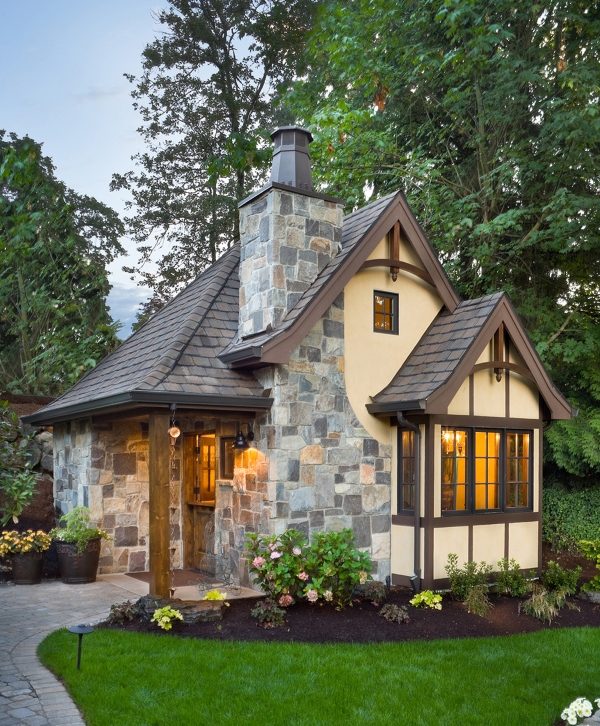
Facing the facade should have such practical properties:
- Waterproof. This is the main quality that affects the life of the construction and comfort of living in it;
- Strength. Finishing materials for facades need to be acquired so that they can withstand strong blows produced by people or falling objects;
- Heat insulation. The well-thought-out finish of the facade of a private house will protect the room from the cold in winter and will keep the coolness in the summer heat;
- Hygienicity. Finishing materials should be resistant to fungus, mold and rotting.
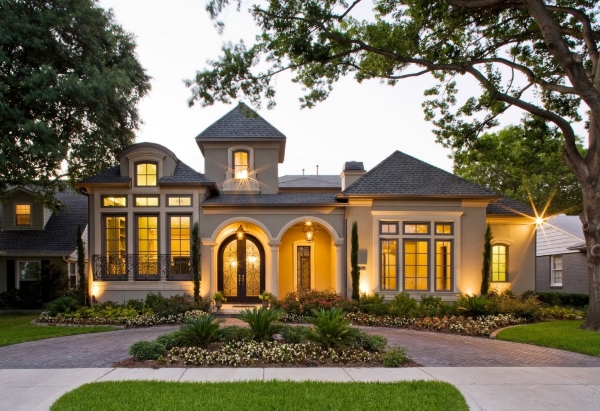 Some materials for the facade of a private house practically do not miss the sound. This factor must be taken into account if the house stands on a noisy street with a lively car movement. Silence and peace in rooms are necessary and adults and children.
Some materials for the facade of a private house practically do not miss the sound. This factor must be taken into account if the house stands on a noisy street with a lively car movement. Silence and peace in rooms are necessary and adults and children.
There are various options for finishing the external walls of residential buildings. The choice depends on the conditions for their operation, the environment and the material possibilities of real estate owners. Consider the features of the main materials that are used for facing facades of private houses. 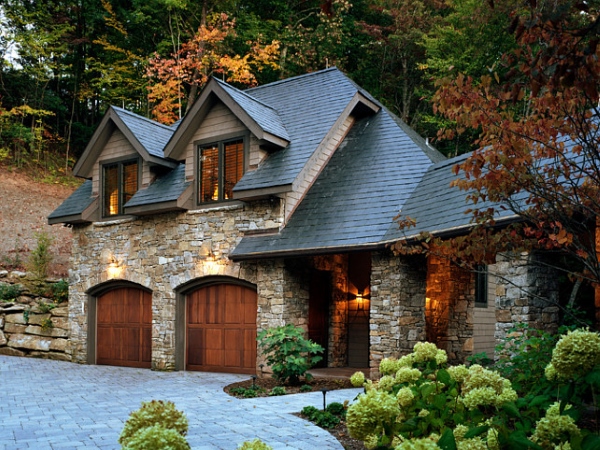
Decorative plaster
Modern building mixes based on plaster and cement are the most common material for finishing a residential building built from brick and foam blocks. To increase thermal insulation qualities, various fillers and plasticizers are added to the mixture. Facade plaster is smooth and textured. Based on this, the methods of applied to the carrier surface differ. The addition of different dyes into the solution allows you to give the walls any color and shade. 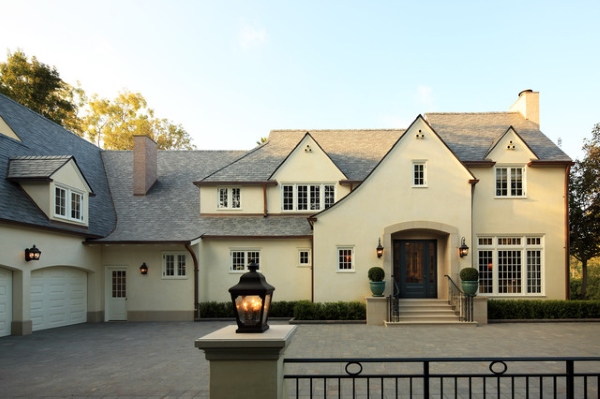
The main advantages of the facade plaster for the cladding of country houses are:
- water resistance;
- aesthetics;
- resistance to low and high temperatures;
- simplicity of applying on the walls;
- non-hatching.
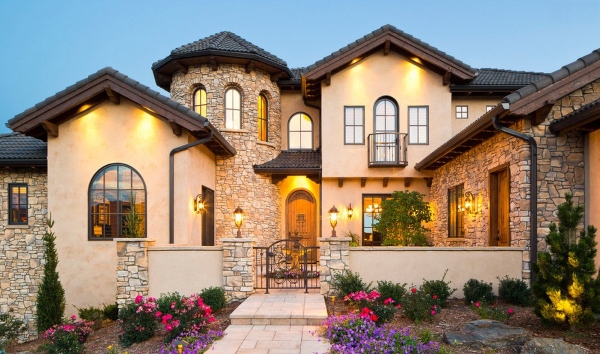
For the facade of the house, mineral, silicate and acrylic plaster are used. Defined minuses of these materials is the complex technology for the preparation of the carrier surface and low resistance to mechanical effects.
Clinker tile
Clinker tiles are made of natural materials. It can be a smooth or textural, imitating surface of natural stone. 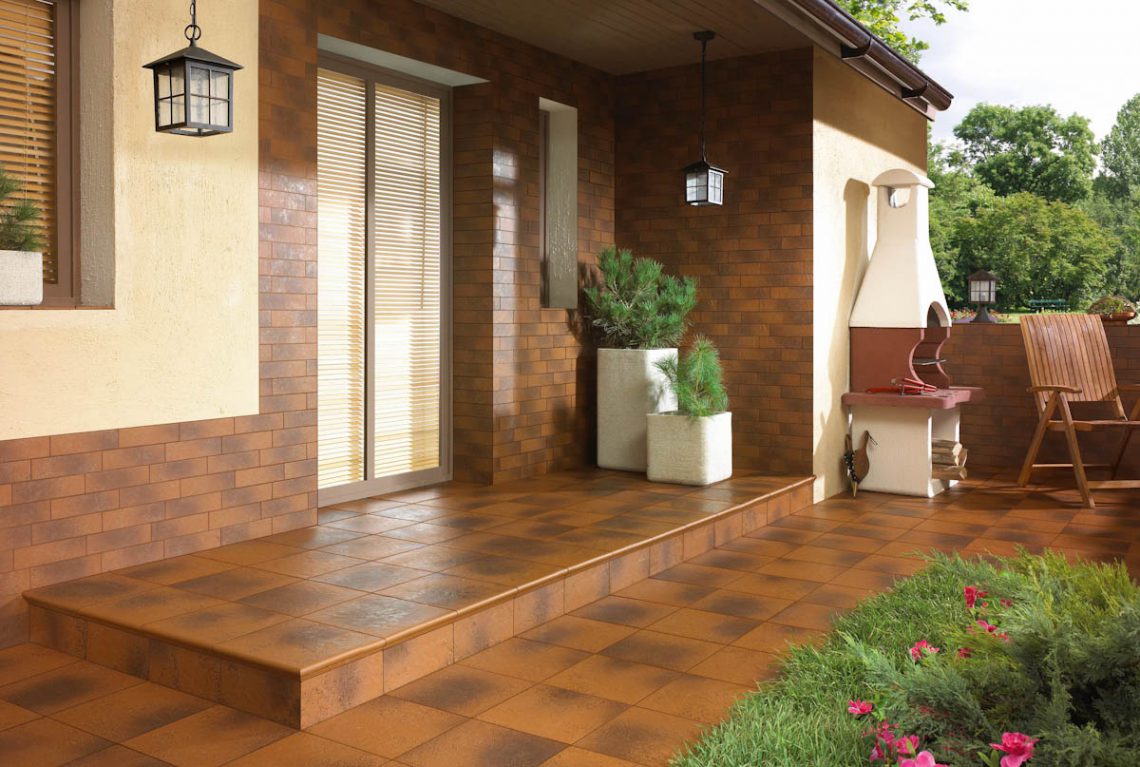
The main advantages of clinker bricks are:
- High strength. Clinker withstands the most extreme mechanical effects without losing its aesthetic characteristics.
- Easy to maintain. The surface of the tile can be washed with any detergent and solvents.
- Variety of colors and textures. To finish the house, clinker laying options can be selected the most unusual and original.
- Durability. When compliance with the laying technology, clinker tiles can be stopped several decades. In case of damage to individual fragments, they are easy to replace with new ones.
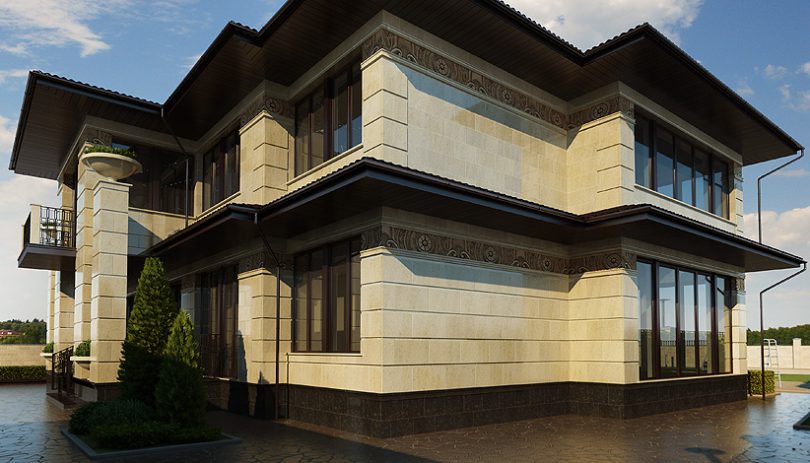
The disadvantages of this material include its high cost and complexity in laying.
Facade panels
The front panels for the outer finish of the house are distinguished by a solid list of advantages. Today, the release of these products in the widest range is established. In addition to purely ornamental functions, the front panels for the outer decoration of the house perform tasks for insulation and waterproofing of the structure. As a rule, the panels are installed in the system of ventilated facades. This allows you to create a solid and aesthetic surface without a preliminary and expensive repair of the walls of the house. Installation of facade panels is performed on a frame of a wooden bar or a steel profile. 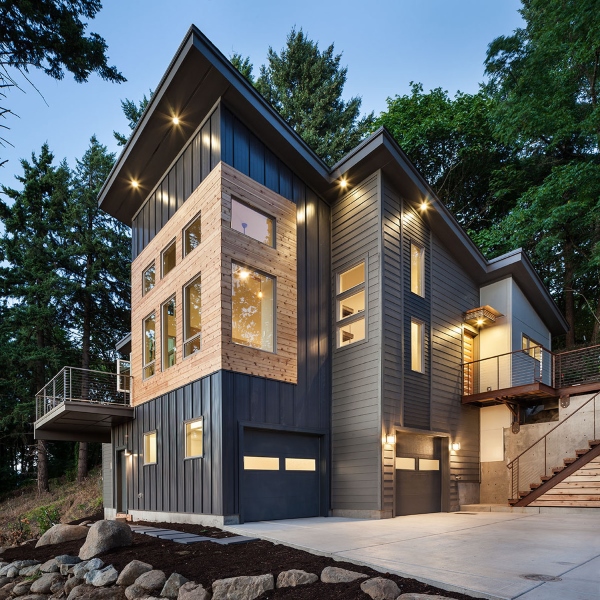
The most popular material for holding buildings is a sandwich panel. They are products consisting of insulation, located between two sheets of metal or plastic.
The advantages of the sandwich panels are as follows:
- ease;
- ease of work;
- resistance to corrosion, mold and rotting;
- low thermal conductivity;
- long service life;
- waterproof.
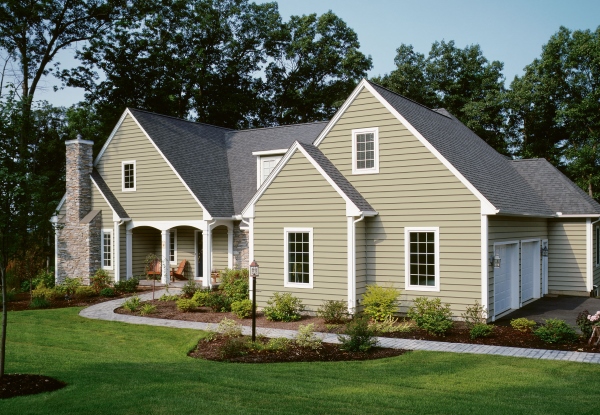 The damaged panel can be quickly and easily replaced. Despite the fact that the cost of products is quite high, this minus is compensated for by the absence of the need to use solutions and dyes.
The damaged panel can be quickly and easily replaced. Despite the fact that the cost of products is quite high, this minus is compensated for by the absence of the need to use solutions and dyes.
Ceramographic
Porcelain stoneware is a modern finishing material created from polymeric raw materials. The use of various dyes and fillers allows designers to create porcelain tiles and blocks with a variety of pattern and color. Porcelain stoneware imitates such materials such as natural stone (basalt, marble, granite) and natural wood. The physical properties of this material are quite high. 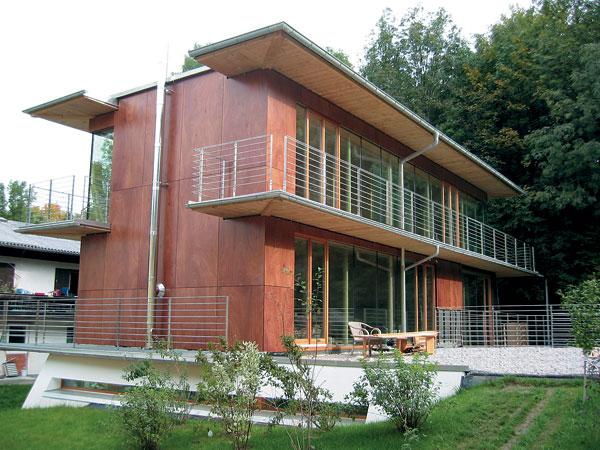
It is distinguished by such advantages:
- high strength;
- long service life;
- waterproof;
- resistance to solar radiation;
- immunity to fungus and mold.
The main advantage of porcelain tiles before tiled is its homogeneity throughout the volume. So, chips and scratches do not disturb the integrity of its surface. They are easily grinding and polished, after which the surface acquires the original presentation. 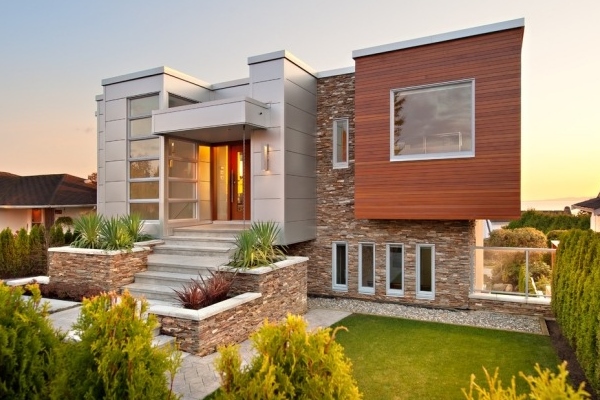
Building decoration with a porcelain stoneware has its own characteristics. If it is attached directly to the wall, then it is necessary to use a special synthetic glue. Another way of facing the facade is the fastening of the tile on a metal frame equipped with special clips.
Siding
As a rule, decorative panels are used to arrange residential buildings. They are made of metal or polymer plastic. The most practical siding, made of polyvinyl chloride. Installation of panels is carried out on a wooden or steel frame.
Since siding does not give complete sealing, it is recommended to use material resistant to humidity as insulation. In addition, PVC panels have a fairly high thermal expansion coefficient. To prevent the deformation or destruction of the surface of the siding with strong temperature drops, a sliding type of fastening panels to the frame is used. 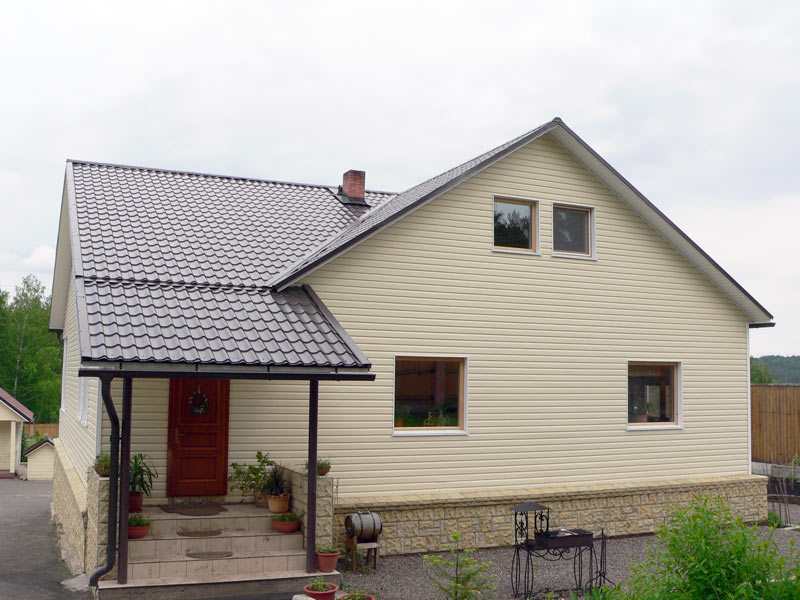
The advantages of facing panels are:
- high aesthetic qualities;
- sufficient strength to withstand strong blows and pressure;
- affordable cost;
- simplicity and high installation speed;
- long service life.
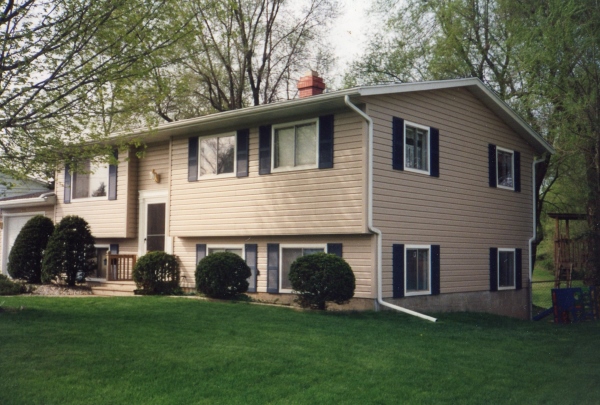 The panels are quite realistic to imitate natural wood, natural stone, brick or decorative plaster.
The panels are quite realistic to imitate natural wood, natural stone, brick or decorative plaster.
Photo Gallery
We provide your attention a successful selection of 27 photo-ideas of finishing the facade of a private house.
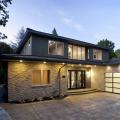 Facade design of a country house: a variety of stylistic directions
Facade design of a country house: a variety of stylistic directions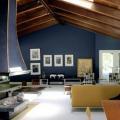 Wooden ceilings - 25 interior examples
Wooden ceilings - 25 interior examples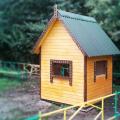 How to make a children's game lick with your own hands
How to make a children's game lick with your own hands